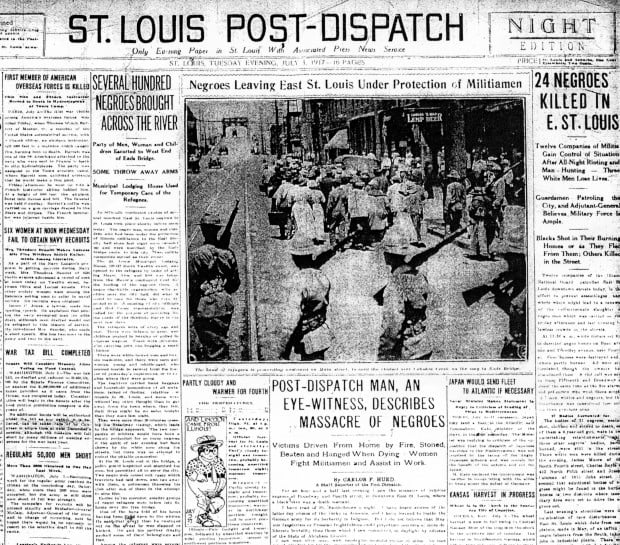The first hanging
The condemned soldiers (one sergeant, four corporals, and eight privates) were transferred to a barracks on December 10. That evening, motor trucks carried new lumber for scaffolds to some bathhouses built for the soldiers at Camp Travis near a swimming pool in the
Salado Creek. The designated place of execution was several hundred yards away. Army engineers completed their work by the light of bonfires. The thirteen condemned men were awakened at five in the morning and brought to the gallows. They were hanged simultaneously, at 7.17am, one minute before sunrise. The scaffolds were disassembled and every piece returned to
Fort Sam Houston. The
New York Times, impressed by the clean-up operations, observed the place of execution and place of burial were “indistinguishable.” Only army officers and County Sheriff John Tobin had been allowed to witness the execution.
Gen. Ruckman told reporters he had personally approved the death sentences and said that forty-one soldiers had been given life sentences and four received sentences of two and a half years or less. He said he was the one who chose the time and place for the executions. (p. 7).
[4] Weiner’s 1989 law review articles point out that what Ruckman had done in the first court martial was “entirely legal” and “in complete conformity” with the 1916
Articles of War. This conclusion was reported in the nation’s newspapers
Second court martial
Six days later, a second court martial began (known as “the Washington Case”). Fifteen men of the Lower A Division were tried and five were sentenced to death. On January 2, 1918, Ruckman approved the sentences in a public statement. A new rule - General Orders No. 167, dated December 29, 1917 - prohibited the execution of any death sentence until after review by the Judge Advocate General’s Office. Just over two weeks after Ruckman approved of the verdicts in the second court martial, the War Department also issued General Orders No. 7 requiring that – as a matter of policy - all death sentences be suspended until the President of the United States could officially review all records. It is certain that Major General Ruckman was aware that this order was in the making. The
Washington Post reported that representatives of the New York branch of the
NAACP had presented a petition to President Wilson to extend clemency to the five soldiers recently sentenced to hang. The Commander of the Southern Department waited until both the Secretary of War and President
Woodrow Wilson could review the case.
Meanwhile, Ruckman approved the holding of a third
court martial (known as “the Tillman Case”) to try forty more soldiers. Haynes suggests the announcement of the third trial encouraged President
Woodrow Wilson to wait to review records until all of the verdicts were in for the Houston Riot cases. On March 26, twenty-three soldiers were found guilty. Eleven were sentenced to death and the others to life in prison. On May 2, Ruckman approved the sentences.
Wilson's clemency and commentary
On August 31, 1918,
President Wilson granted clemency to ten soldiers by commuting their death sentences to life in prison.
[5] Wilson also issued a rare public statement in order that the basis of his action might be “a matter of record.”
[6]
The President’s statement began by recounting the events that led to the deaths of “innocent bystanders” who were “peaceable disposed civilians of the City of Houston.”
[5] He noted the investigations that followed were “very searching and thorough.” In each of the three proceedings, the court was “properly constituted” and composed of “officers of experience and sobriety of judgment.” Wilson also noted “extraordinary precautions” were taken to “insure the fairness of the trials” and, in each instance, the rights of the defendants were “surrounded at every point” by the “safeguards” of “a humane administration of the law.” As a result, there were “no legal errors” which had “prejudiced the rights of the accused.”
[6]
Wilson stated that he affirmed the death sentences of six soldiers because there was “plain evidence” that they “deliberately” engaged in “shocking brutality.”
[6] On the other hand, he commuted the remaining sentences because he believed the “lesson” of the lawless riot had already been “adequately pointed.” He desired the “splendid loyalty” of African American soldiers be recognized and expressed the hope that clemency would inspire them “to further zeal and service to the country.”
Most importantly, from General Ruckman’s standpoint, Wilson (a former law professor) wrote the actions taken by the former Commander of the Southern Department were “legal and justified by the record.” Indeed, the President agreed that “a stern redress” of the rioters’ “wrongs” was the “surest protection of society against their further recurrence.” However, the morality and justice of the trial was doubted from the first.
[5] As historian Calvin C. Smith noted in 1991, there was no proof of a "conspiracy," and many of the sentenced were not conclusively identified in the dark and rainy night as having even participated in the riot.
[7] Whites who defended Houston from the illegal actions of the rioting blacks were not charged for their actions.
[8]
On September 29, 1918, five more soldiers met their deaths at daybreak. One week later, the sixth was marched to the gallows

















